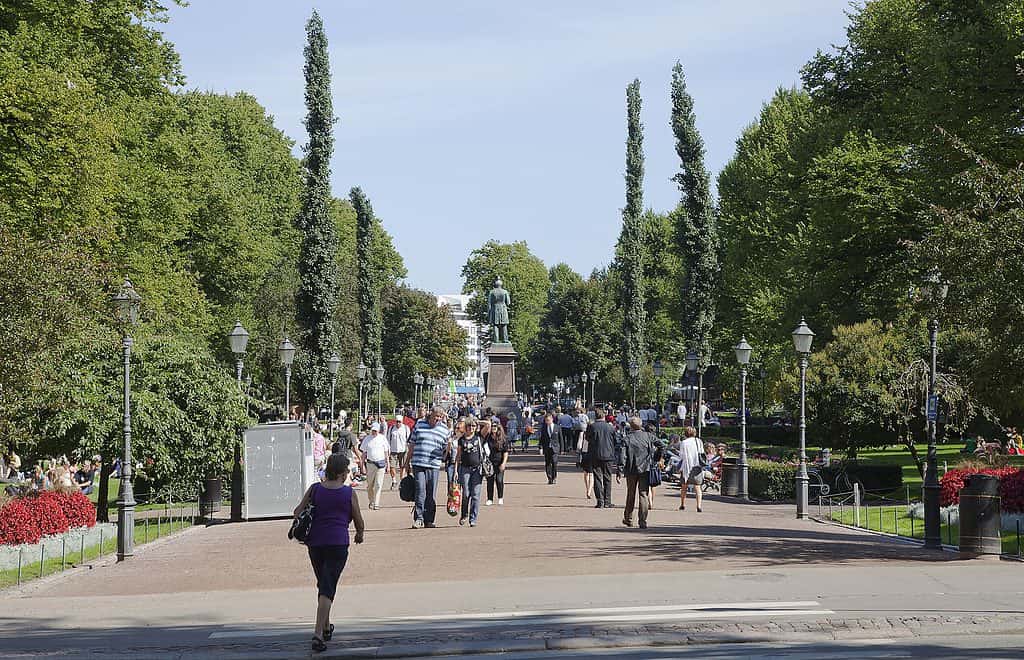Spending time in nature, whether it’s the great outdoors or parks, can be a great boon for people’s health. But this effect may be even stronger than we thought: a new study found that going in nature three to four times a week reduces people’s chances of using drugs for mental health or high blood pressure by a third, and for asthma by a quarter.

A growing list of studies has suggested that exposure to green spaces could be beneficial for mental, cardiovascular, and respiratory health. However, medications have rarely been used as an indicator of health status. Researchers in Finland now investigated the use of psychotropic, antihypertensive, and asthma medication, and how this use is influenced by people’s spending of time in nature.
The study found that visiting urban green spaces three to four times a week reduces people’s chances of using drugs for mental health or high blood pressure by a third, and for asthma by about a quarter. The positive effects of visiting green areas were also found to be stronger among those reporting the lowest annual household income.
“Scientific evidence supporting the health benefits of nature exposure is likely to increase the supply of high-quality green spaces in urban environments and promote their active use. This might be one way to improve health and welfare in cities,” the researchers wrote in the study, published in the journal Occupational and Environmental Medicine.
Green areas and drugs use
For their study, the researchers from the Finnish Institute for Health and Welfare wanted to find out if the amount of green and blue space (bodies of water), frequency of visits, and views of green and blue spaces from home could be linked to the use of prescription meds. They draw on the responses of 16,000 residents to a state survey.
For the purpose of the study, green areas were defined as forests, parks, gardens, cemeteries, zoos, castle parks, and herbaceous vegetation such as wetlands. Blue areas were defined as lakes, rivers, and sea. The researchers considered potentially influential factors, such as outdoor air pollution, noise, and household income, attempting to statistically reduce their influence.
Respondents also had to inform how often they spent time, or exercised outdoors in green spaces, with options ranging from never to five times or more during a week. And they were asked whether they could see green or blue spaces from any of their windows at home, and if so, how often they looked at these, from seldom to often.
The survey was carried out on people living in Helsinki, Espoo, and Vantaa (the three cities that make up the largest urban area in Finland); it gathered information on how people experienced residential green and blue spaces within a 1 km radius of their home. The respondents were also asked to report their use of prescribed meds for different periods of time.
Overall, the study found a strong link between visits to green and blue spaces and lower odds of using prescription drugs. Visiting three to four times weekly was associated with 33% lower odds of using mental health drugs, 36% lower odds of using blood pressure drugs, and 26% lower odds of using asthma drugs – when compared to visiting just once a week.
However, those who visited green and blue spaces at least five times a week were only 22% less likely to use mental health drugs, and 24% less likely to use asthma medications. The increased frequency did correlate to lower odds of using blood pressure drugs, with 41% fewer chances than someone visiting less than once a week.
While very exciting, the study also has significant limitations. For starters, this was an observational study, which means the researchers couldn’t establish a cause and effect — only a correlation was established. No information was available on illness severity, and better health could enable a person to spend more time outdoors, they said. Also, Finland may not be a representative country as it has not only relatively high income, but also has high forest cover, which means it’s easier for those willing to use green spaces to access them with minimal effort.
Still, if further research could confirm the findings on a broader scale, it could make a big difference for people taking prescription medicine for a number of different conditions.






